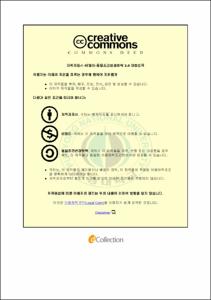항만관리주체 선정을 위한 모형개발에 관한 연구
- Alternative Title
- A Study on Modeling for Optimizing Major Participants of Port Administration
- Abstract
- The purpose of this study is to model what is the optimal alternative among major participants of port administration. The study generates four evaluation criteria and six alternative port management parties from preceding studies, based on which an Analytical Hierarchy Structure Model and a questionnaire are made. A survey is conducted with a port experts group and different status is given to each level using an AHP method.
The analysis of the evaluation criteria in level 2 shows that the highest status is given to the improvement of port productivity followed by the efficiency of port operations, independence of HR and financial management and publicness of ports.
Secondly, the analysis of independence of HR and financial management in the alternative of level 3 shows that the highest status is given to a private company followed by an independent port authority, a consolidated port authority, Metropolitan City government and the central government in order. The analysis of the efficiency of port operations shows that the highest status is given to a private company followed by an independent port authority, a consolidated port authority, Metropolitan City government and the central government in order. The analysis of publicness of ports shows that the highest status is given to the central government followed by Metropolitan City government, a local government, a consolidated port authority, an independent port authority and a private company in order. In short, a private company holds the highest status in the criteria of independence of HR and financial management, the improvement of port productivity and the efficiency of port operations. The central government holds the highest status in publicness of ports.
Thirdly, the comprehensive analysis of the alternative port management parties shows that the highest status is given to a private company followed by an independent port authority, a consolidated port authority, Metropolitan City government, the central government and a local government in order. Therefore, a private company is selected for the optimal port management party.
As the overall inconsistency index of the hierarchy is below 0.1, the analysis of evaluation criteria and alternatives is considered consistent.
In Korea, the port management should be transferred from the central government to private companies. Port management by private companies will bring various benefits including the improvement of port productivity and efficiency, greater government income, dedication of the port workers and diminished impact of union.
The study is composed of five chapters;
Chapter 2, Theory of Port Management System, deals with the importance and various types of port management and identifies candidates for port management. It describes the history and issues of korean port management and examples of overseas ports. Then it sorts out important factors to be considered in selection of a port management party through preceding studies.
Chapter 3, Analytical Model for Selection of Port Management Party, generates evaluation criteria and alternatives to analyze port management parties from preceding studies and port experts. It also presents the theory of AHP, based on which Analytical Hierarchy Structure Model is built.
Chapter 4 presents the purpose and contents of the survey, which is carried out for port experts. In addition, AHP method is analyzed to select the optimal port management party.
Finally Chapter 5 summarizes the analysis conducted in Chapter 4. It also describes the implication and the limit of the study and presents further studies to be done in the future.
- Issued Date
- 2012
- Awarded Date
- 2012. 8
- Type
- Dissertation
- Publisher
- 부경대학교
- Alternative Author(s)
- Hye-jeom, Choo
- Affiliation
- 부경대학교 대학원
- Department
- 대학원 수해양인적자원개발학과
- Advisor
- 김삼곤
- Table Of Contents
- Ⅰ. 서 론 1
1. 연구의 배경 및 목적 1
2. 연구의 방법 및 구성 3
Ⅱ. 이론적 고찰 5
1. 항만관리의 의의 및 배경 5
가. 항만관리의 의의 5
나. 항만관리의 배경 7
2. 항만관리의 형태 13
3. 항만관리주체 20
4. 주요국의 항만관리제도 24
가. 영국 24
나. 프랑스 25
다. 미국 26
라. 독일 27
마. 일본 28
바. 중국 29
5. 우리나라 항만관리제도의 변천과 문제점 30
가. 항만관리제도의 변천 30
나. 항만관리제도의 문제점 31
6. 선행연구 34
Ⅲ. 모형개발 36
1. 모형개발의 이론적 배경 36
가. AHP 기법의 도입 36
나. AHP 기법의 수행 과정 37
2. 항만관리주체 선정 요인 도출 42
가. 항만관리주체 평가속성요인 42
나. 항만관리주체 대안 44
3. 계층분석구조의 모형 구축 45
Ⅳ. 실증 분석 47
1. 설문의 목적과 구성 47
가. 설문의 목적 47
나. 설문의 구성 47
다. 표본의 크기 및 수집 47
2. 실증 분석 결과 50
가. 항만관리주체 평가요인 분석 50
나. 항만관리주체의 대안 분석 50
다. 평가요인에 따른 대안별 중요도 53
3. 항만관리주체 대안 선정 55
4. 시사점 56
Ⅴ. 결 론 58
참고 문헌 60
- Degree
- Master
- Appears in Collections:
- 대학원 > 수해양인적자원개발학과
- Files in This Item:
-
-
Download
 항만관리주체 선정을 위한 모형개발에 관한 연구.pdf
기타 데이터 / 2.81 MB / Adobe PDF
항만관리주체 선정을 위한 모형개발에 관한 연구.pdf
기타 데이터 / 2.81 MB / Adobe PDF
-
Items in Repository are protected by copyright, with all rights reserved, unless otherwise indicated.